The conspiratorial art of Andrej Škufca
Collaboration by Domen Ograjenšek
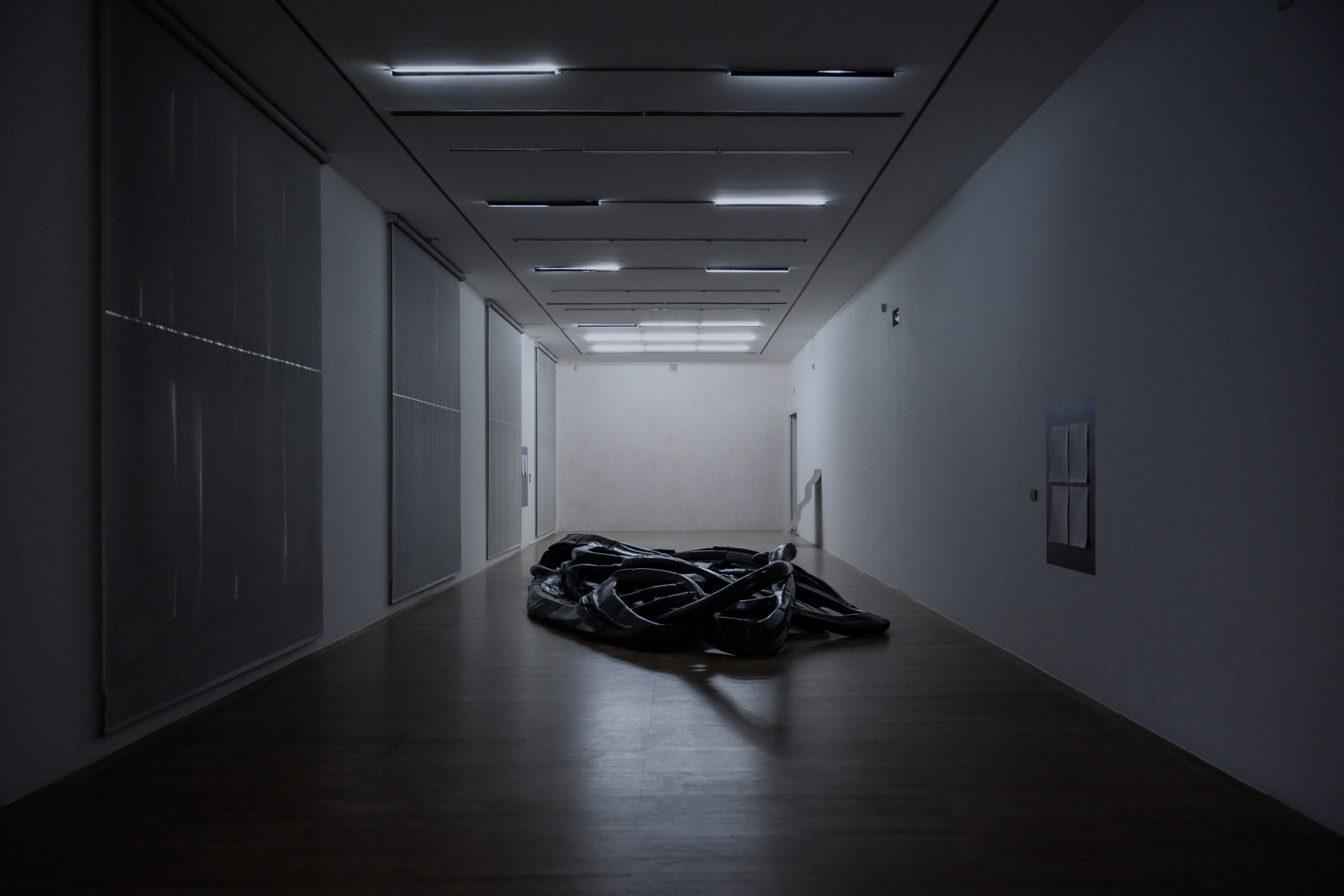
Andrej Škufca, Synthetic Zero (Black Market series), 2019. Photo: Lara Žitko
Emergent speculative environments, packed with traces of novel materials and modular technologies that make use of them. Their origins undetermined or tactfully masked. Concealed. In the forefront, sculptural installations, utilising the principles of speculative design, theory and fiction to further the constructed environment’s suggestive reach.
The practice of Andrej Škufca tackles the medium of sculpture to bring forth large-scale installations that forgo the viewer for the material processes that will surpass it once deployed into the world. It sides with art that refuses to take on anything, if anything stands for everything in its inherent trivialisation (‘anything goes’). [1]
Rather, it remains distant, its interest undefined, detached. In the refusal of the trivial, the sculptures’ forms step out of the referential realm and become an operative trace, a trigger.
***
“They pulled out some of the inventory left in storage from an underground facility near Grosuplje. A container and some other stuff.
Meticulous, yes. Methodical. They were these things. An arrangement in a peculiar location. Nothing extreme. There were signs of wear and damage; some of the materials have started to seep through.” [2]
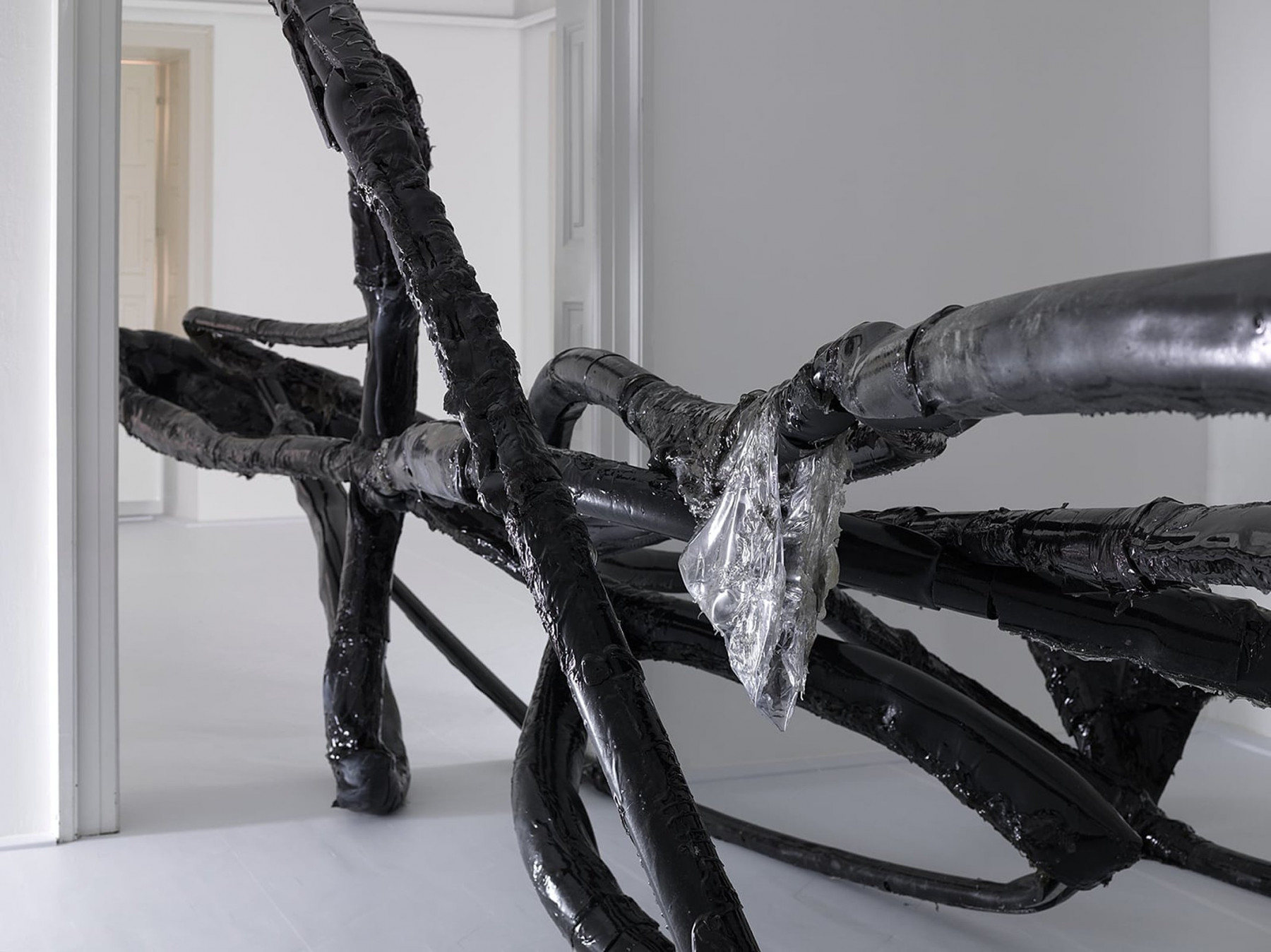
Andrej Škufca, Zero Hedge (Black Market series), 2019. Photo: Jaka Babnik
The small Slovene town of Grosuplje (located in the northwest region of Lower Carniola) makes its way into Škufca’s practice as a space chosen for its vacuous mundanity. Through decades, or centuries, a town remains a town – and does not grow or conjoin into a city, a metropolis – by staying true to its deep rooted ordinariness: a lack that ruins generations, creates lineages of drunks, misanthropes, and provincial melancholics, their sadness embedded in the very soil on which the town stands. Unremarkable places make time seem conditional – dependent on the right circumstances to flow freely. If these are not met, time stills. Like a ripening fruit, the stilling might not be instantaneous nor evenly spread, yet that does not hinder it. All that is subject to its effects soon finds itself bound to an existence devoid of function. People live the lives of their forbearers, objects lie inconspicuously awaiting to be used, though their use might have been forgotten over generations. Now, a mere semblance of cultured objecthood. The ordinary continuously verges on subtle ruination.
Unlike Van Gogh’s shoes, however, the ordinary (and its inherent ruination) is not solely captured and encapsulated within Škufca’s fictioning but becomes also a site of (suggested) temporal discontinuity. The never-changing finds itself at the moment of emergent alterity. Something has supposedly happened. What that something is is difficult to tell. The accounts of it vary.
“None of it could be checked, there was a lot of variation. And then there were parts, good parts, parts that by anyone’s judgment would have to be considered clever.” [3]
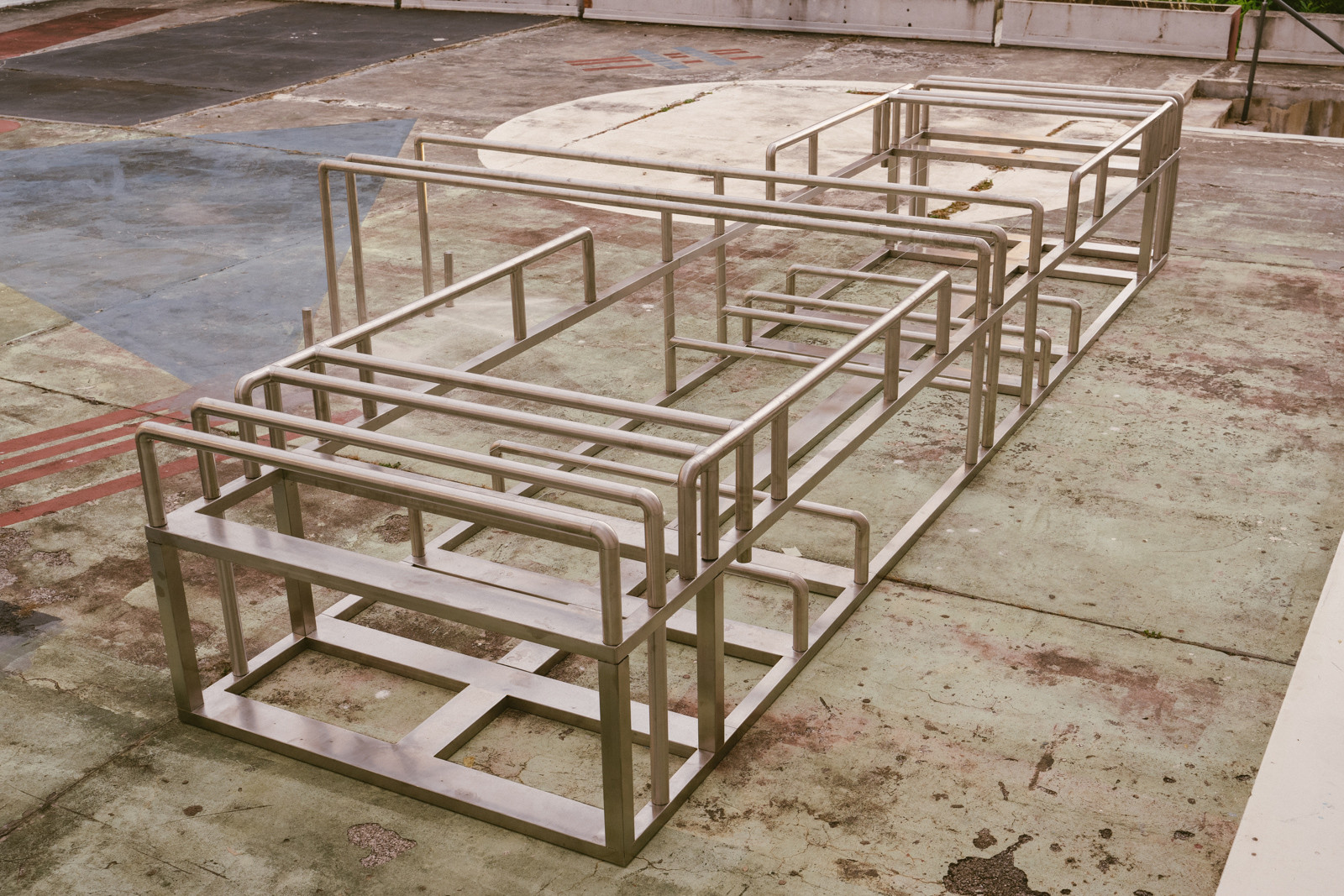
Andrej Škufca, don't even trust nobody, 2023. Photo: Aleksandar Selak
All records of it have been redacted. What remains discernible presents signs of deep ontologic trauma. Objects out of place, their origin and makeup foreign and evasive. The stillness of the ordinary and the random chaos of its fall into disarray suddenly serve as building blocks for intelligence and techniques seemingly out of bounds. The works from 2021 to 2023 instill themselves into the minds of the witnesses who happen to stumble upon their emergence as traces of conspiratorial production. [4] Production, the scale of which is implied, but cannot be fully discerned, as if the required resources outweigh by far those at hand (hypothesising a world or environment that’s different, significantly larger or with more abundant resources).
Before a town is even a town it is a settlement, and all settlements might very well start as conspiracies. People gather and find reasons to stick together. Whatever those reasons might be, founded or unfounded. A settlement becomes ordinary as these reasons cease to be apparent to the community that inhabits it. New buildings emerge out of old ones, new land is cultivated as the depleted land is abandoned, morphing the borders of the settlement without ever considerably changing its outline. If the reasons for the original gathering were to suddenly change, it would most likely not raise awareness or suspicion. Alterity infiltrates the ordinary by taking advantage of its inner conspiratorial mechanisms. The town turns into a factory, turns into a warehouse, turns into a shelter, and eventually settles for an indiscernible purpose. A purpose undisclosed. In its inventory, a collection of chemical compounds, unfamiliar and leaking into the town’s groundwater, and fragments of infrastructure cut off from the general network it once had or shall one day belong to.
The de-accelerating temporality brings on a certain stilling of time and with it a stillness devoid of function – a twisted Kantian ideal which still haunts the contemporary exhibition space. In this sense then, a delineated time, time inherently split between its many coinciding temporalities, stands for an art far more in line with its operative ambition. It leaves behind stillness that is miserably bereft of function for a stillness rather filled with conspiratorial potential, awaiting activation.
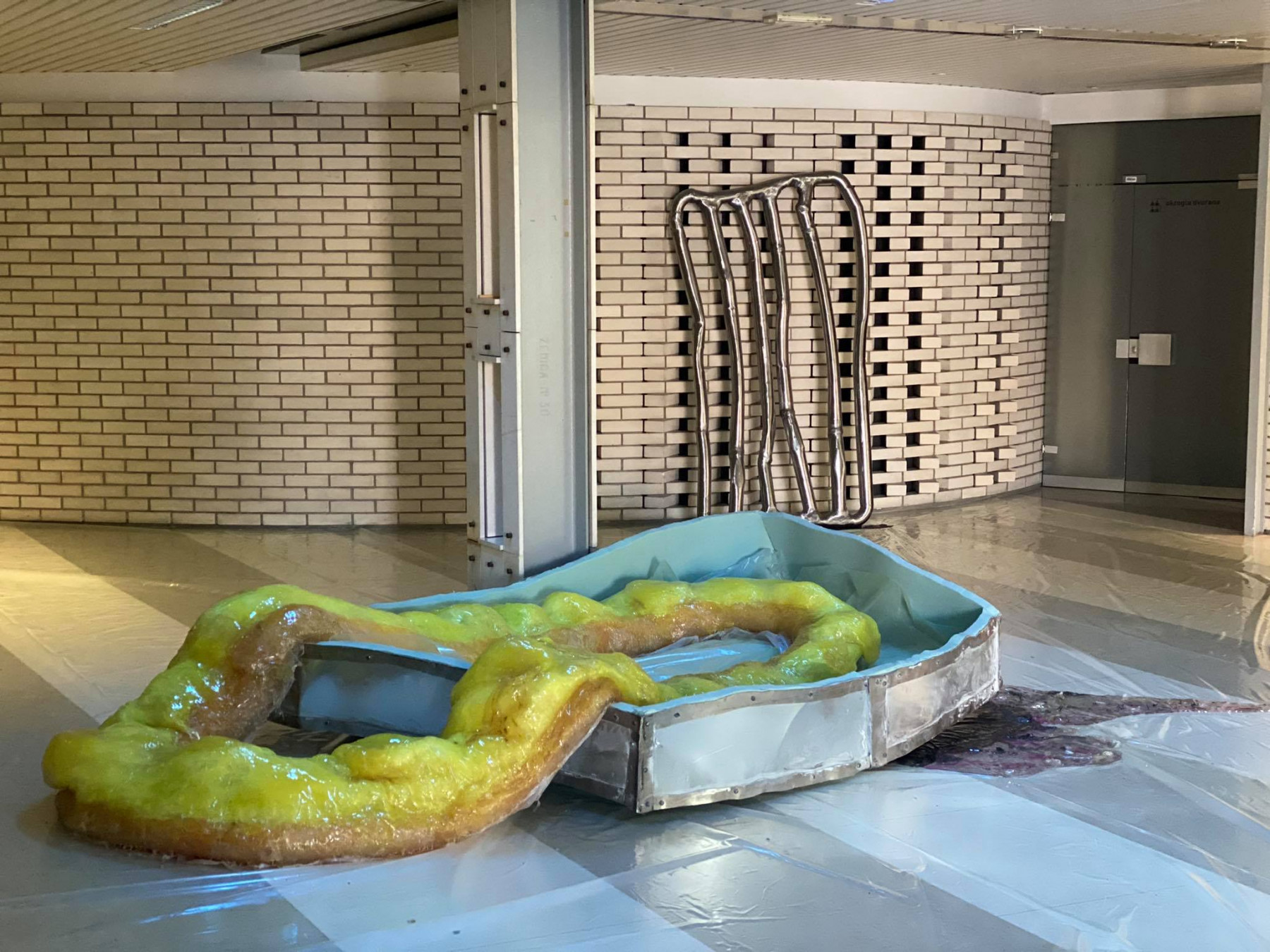
Andrej Škufca, Untitled (part of That which decays is not forgotten and reanimated seeps through boundaries), 2021. Photo: Klemen Ilovar
Currents run amidst Škufca’s works. Transitional processes coming into the fold by way of methodic precision. Signs of coincidence are rare. Marks of time, decay and ominous spills transpire as if pre-determined, signifying that even as things go awry, they stay on track in the broader perspective: in time-spans that surpass those of our mortal lives and habitats. Mishaps are only mishaps for those who struggle to grasp the bigger picture, as beautiful as that picture might be, and only see the crude immediacy of strokes and pigments. The transcendent does not emerge by a mere throw of the dice through which the cosmic powers would decide our fates, but rather through an untangling of its inner trappings. It takes a somewhat paranoid mind to strive to decipher a path forward out of the myopic constraints of lived time. But a mind nonetheless.
Activation takes place as an intrinsic cooperation between intelligence and matter. To become complicit in the broader material processes at play seems to be what the works expect from us. Or conspire to achieve. The sculptural environments take up space, but more than alienating barriers, act like snagged threads, taking on the shape of the known and familiar. They pull us in, ever closer to where the sharp edges of temporal alterity eagerly await our fast-beating hearts. All events are already predicted by the very materials that will allow these events to occur. To be complicit then is to follow these predictions through.
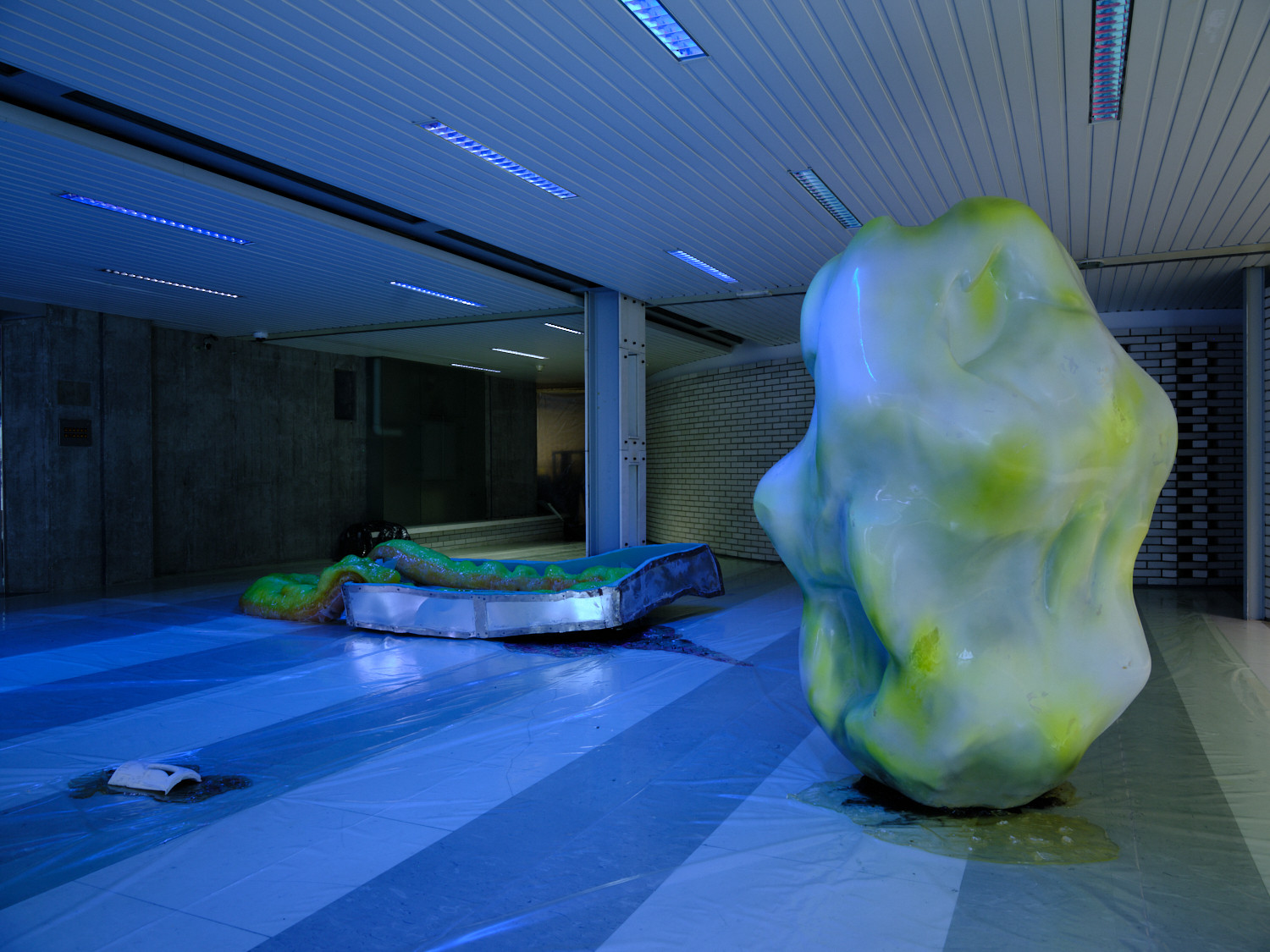
Andrej Škufca, Untitled (part of That which decays is not forgotten and reanimated seeps through boundaries), 2021. Photo: Klemen Ilovar
“No one would say that it was complicated. It wouldn’t even be considered new except for maybe in a material sense. A lot of it can be traced. They took from their surroundings what was needed and made of it something more.” [5]
***
The still is rarely met with suspicion. It seems benign and manageable instead – on its path to be considered ordinary. The sculpture is no exception. Once it sheds its representational servitude to the powers that be, it as well runs the risk of becoming ordinary. For good and for worse. What then distinguishes the mundane from the conspiratorial might very well be that which allows us to be pulled in by these works in the first place. The curious desire to partake in concerns that surpass our localised embodied views. Seemingly in the transcendent itself. Škufca’s practice delivers on entangling these desires. Luring them into complicity. It lures the contemporary subjectivity out of its double bind of active inaction, out and onto a terrain where its agency might no longer be needed.
[1] Patricia Reed, 2016, “For a Nontrivial Art”, in: Václav Janoščík, Vít Bohal, Dustin Breitling (eds.), 2016, Reinventing Horizons, Display Association for Research and Collective Practice, Prague, pp. 163–180.
[2] Excerpt from a piece of prose by Andrej Škufca accompanies the series of works That which decays is not forgotten and reanimated seeps through boundaries 2021. Škufca’s words further expand the works’ implicit fictioning. The writing was published in the catalogue and on the webpage of the 34th Ljubljana Biennale of Graphic Arts, where the works were initially presented. Accessible at: https://34.bienale.si/en/projects/andrej-skufca/.
[3] Ibid.
[4] Namely That Which decays is not forgotten and reanimated seeps through boundaries (2021), SUR 110 (2022/23), and don’t even trust nobody (2023).
[5] Škufca, 2021.
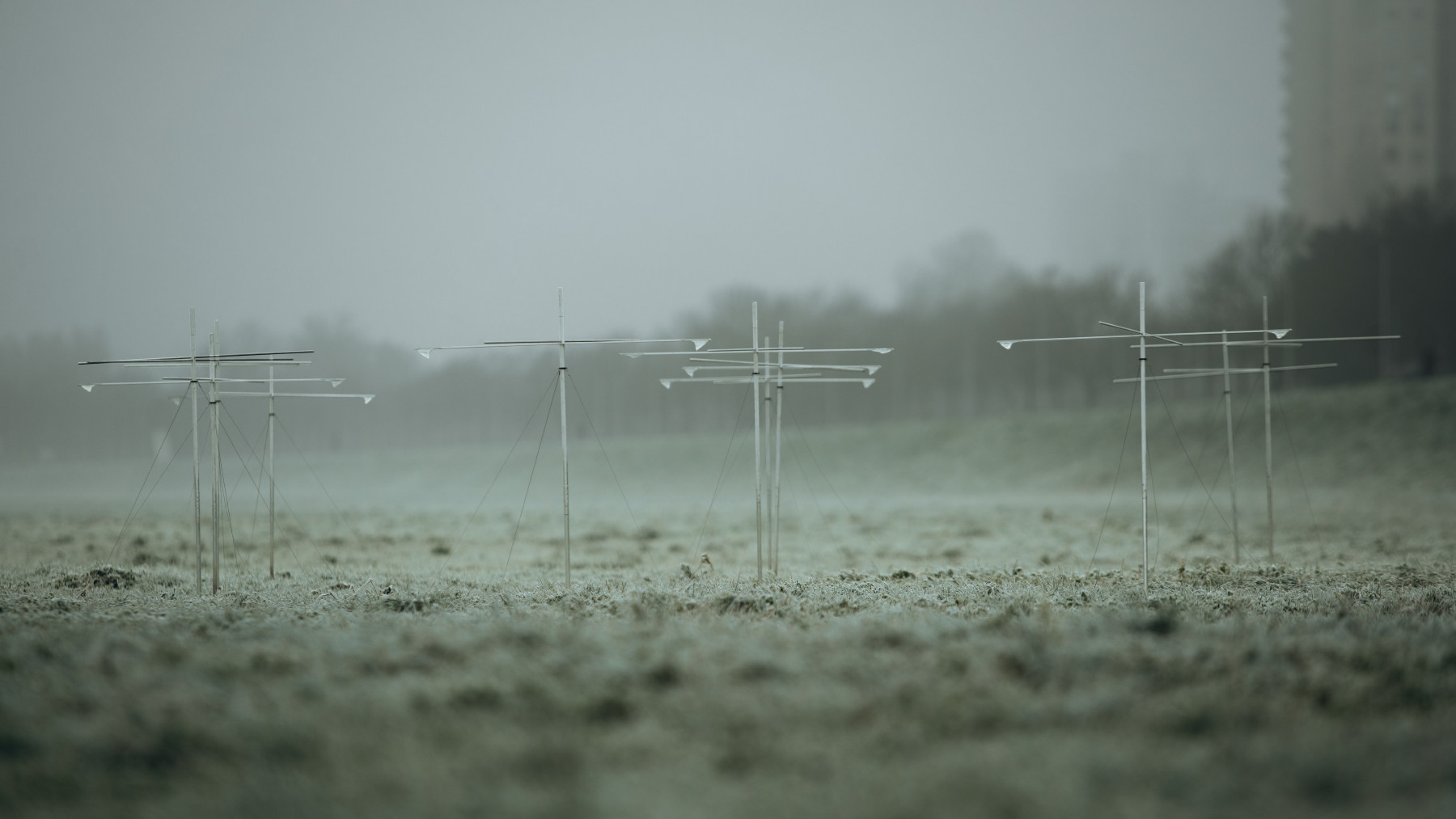
(Andrej Škufca, SUR 110, 2022/23. Photo: Ive Trojanović